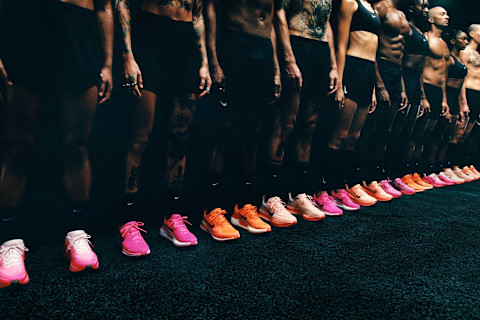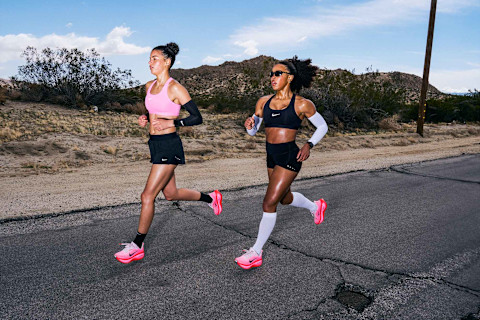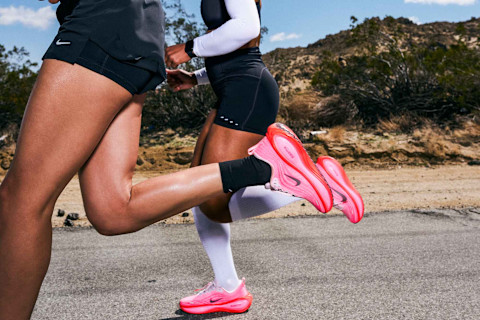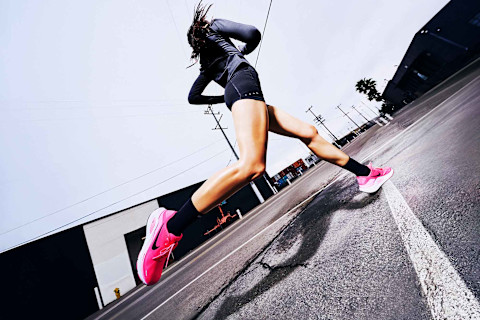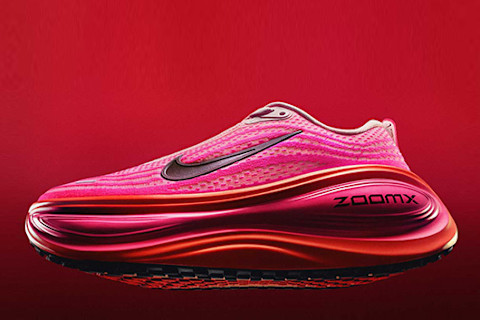Run-Tested, Runner-Approved: 3 Nike Shoes That Are Worth The Hype

The hardest part of running isn’t always logging the miles. It’s finding the right shoes to carry you through them. Don’t get me wrong, a lot goes into my training for a race (nutrition, strength work, mobility, mindset, and so on)—but after more than a decade of half and full marathons, I’ve learned that the shoes on my feet are the real secret to how I feel when I cross the finish line.
Running is a sport of trial and error, and as a wellness writer and product tester, I’ve rotated through more shoes than I can count (10 pairs this training season alone). This week, I put three new Nike standouts to the test: the Pegasus Premium, Vomero Plus, and Structure 26.
After logging 35 miles in these shoes, I’m breaking down exactly how they stacked up to my expectations. Plus, I’ll share key tips to help you decide which pair is best for your foot type, running style, and training goals. Pre-warning: If you’re anything like me, you may want multiple pairs.
Don't forget!
- Name: Carleigh Ferrante
- Age: 36
- Foot type: Neutral arches, neutral stride
- Activity level: Active
- Running experience: Currently training for fifth world major marathon
My testing process
I’m about 10 weeks out from the New York City Marathon, so my training is really starting to ramp up. This week I had two easy runs, a tempo run, an interval workout, and a long run. Throughout the week, I tested each of these shoes extensively.
Before diving in, I did a lot of research to decide which shoes would be best for which runs. I landed on the Pegasus Premium for my tempo and interval runs, the Vomero Plus for my easy runs, and the Structure 26 for my long runs.
After testing running gear for quite some time, I have it down to a science. Throughout each run I paid close attention to how the shoes felt on my feet, plus how the rest of my body reacted. In the days after, I tuned into how my muscles were recovering compared to after runs with other shoes I’ve tested.
At the end of the week, I logged 10 to 14 miles in each shoe, with 35 miles total.
Why Nike?
Before we get into my experience with each of the Nike running shoes I tested, a quick note about what led me to trying these shoes in the first place.
Nike has always been my North Star as a runner. Whenever I’m searching for a new pair of running shoes (or new running apparel!) Nike is the first place I look.
To put it simply: The brand makes great running gear. With Nike’s commitment to excellence, I always feel confident knowing the shoes will hold up over time, fit true-to-size, and feel great on my feet. Plus, I’d be remiss not to mention that the designs are incredibly cute.
What led me to this new suite of products specifically is that it has something for everyone (and for every run). Nike is truly championing the power of choice for runners. The brand created this three-shoe “Choice Lineup” to help runners choose which fit and feel is best for their running style.
In fact, Nike’s Choice Lineup insights are what helped me learn which shoe would be best for which run on my training plan this week.
My experience with Nike Pegasus Premium
I try not to hype up a shoe too much before I test it out, but I’ll admit I was the most excited about the Nike Pegasus Premium. After hearing a lot of buzz around this new shoe in the running community, I was actually a little nervous to find out if it lived up to the hype.
Since the Pegasus Premium is designed to be the most responsive shoe of the three I tested, I chose it for my speed training days. I wore these shoes for a six-mile tempo run on Tuesday and a five-mile progression run on Thursday.
I’m training for a 7:25 mile pace for this marathon, and this week I had mile repeats at 6:50 per mile. Big goals in mind, I’m especially selective about my footwear for speedwork. In other words: My bar was set high for these shoes.
Highlights
I really loved running in the Pegasus Premium shoes! Off the bat, they were my favorite design of the bunch. I couldn’t wait to rock them on the West Side Highway, but I was a little nervous that they’d feel heavy. The shoes have multiple layers of foam, which for other brands can mean for a heavier ride.
Lucky for me, Nike’s foam feels lighter than air. I’ve run in the OG Pegasus shoes before, and these were even more responsive. They’re designed with Nike’s ZoomX foam in the midsole and ReactX foam in the heel, a combination that propels my foot forward almost as much as a carbon-plated shoe.
The Pegasus Premium shoes are bouncy and responsive, and truly exceeded my expectations. They helped me hit my target paces with stride. I also really appreciate the breathable and lightweight mesh upper.
Who it’s best for
After 11 miles in the Nike Pegasus Premium shoes, I’d confidently recommend them to runners who want maximum responsiveness for faster runs. If you’re doing any type of speed work, these are a great pick.
I personally plan on continuing to wear these during my marathon training cycle for short and long speed training days. They’re also a great choice for long run days, especially if you want to practice your race pace.
My experience with Nike Vomero Plus
Not to be dramatic, but this shoe changed me. I’ve never really been drawn to shoes with max cushioning in the past, mostly out of fear that they’ll feel heavy and clunky. Needless to say, the Nike Vomero Plus proved me wrong.
I kicked off the week with a six-mile easy recovery run. My body was feeling pretty tired after a 16-mile long run two days before, and the Vomero Plus was the perfect choice for my sore legs. The plush cushioning felt like exactly what my body needed.
I laced them up again for my easy four-mile run a few days later and had the same experience. I love that the plush cushioning doesn’t feel heavy under my feet. Instead, it offers a soft landing that eases the impact of running on pavement.
Highlights
Typically, the next run after my long run can feel like a bit of a struggle. I know recovery runs are a crucial part of training, but I’ll often find it difficult to keep my pace slow. I’ll rush through the run simply because my body is tired and I want to get it over with. But with the Vomero Plus on my feet, I actually enjoyed the ride.
What stood out to me during my 10 miles in the Vomero Plus was the soft cushioning and sustained comfort. The shoes felt breathable (even in 80-degree New York City weather), and very forgiving on the hard ground.
After one week of running in these plush, forgiving shoes, I don’t want to wear anything else for my recovery runs. I even noticed that my body bounced back quicker than usual this week.
Who it’s best for
I’d recommend the Nike Vomero Plus shoes to literally any runner. They’re great for everyday runs (recovery/easy runs or long runs) and a solid option for both beginner runners and those of us who have been in it for years.
They have neutral support and neutral stability, so these shoes are perfect for runners with a neutral arch and stride. The plush cushioning also makes the Vomero Plus shoes a strong choice for anyone wanting extra padding while running.
My experience with Nike Structure 26
The Nike Structure 26 shoes got a prominent place in my lineup this week. I wore these shoes for my 14-mile run.
For a runner, there are few things worse than wearing the wrong shoes for your long run. I typically never test something brand new on long run days. But like I said, I’ve built a lot of trust in Nike. So I had faith these shoes wouldn’t let me down.
A true stability shoe, they’re designed to help maintain alignment of your foot and your stride in runners who have flat feet or low arches, or who overpronate (which is when your foot rolls inward on your stride).
Side note: My arches and my stride are both fairly neutral, but I still have extensive experience testing stability shoes—and I believe anyone can benefit from them!
Highlights
When I first laced up these shoes, I immediately noticed the secure (yet not stiff) fit. I’ve been disappointed by other stability shoes in the past that just feel really rigid, but these were surprisingly flexible.
Per the name, they’re definitely the most structured of the three I tried. Even as someone who has a neutral stride, I could feel that these shoes kept me more aligned and supported throughout my long run.
Most importantly, they were comfortable. The full-length ReactX midsole provided just the right amount of cushioning to soften my landing, and the shoes felt quite responsive. I didn’t feel any rubbing or discomfort during the 14 miles I ran in the Structure 26 shoes, which speaks volumes.
I felt very light on my feet throughout the run, and I especially loved the added comfort from the extra padding around the tongue and collar of the shoe.
Who it’s best for
The Nike Structure 26 shoes are a top choice for runners with flat feet or low arches, or who overpronate. They’re expertly designed for maximum stability, and as someone who has struggled with that in the past, I appreciate how supported I felt in these.
I’d recommend these shoes to anyone who needs the extra support and stability. They’re great for long runs, everyday runs, or even walking.
How to choose
| Shoe | Benefit | Best for | Ideal run |
|---|---|---|---|
| Pegasus Premium | Energy | Runners who prioritize speed | Pace work / long run |
| Vomero Plus | Comfort | Any runner from beginner to seasoned | Everyday runs |
| Structure 26 | Stability | Runners who need support maintaining alignment | Long runs / everyday runs / walking |
Comparing the Nike shoes
Every foot is different and every stride is unique. When I first started running, I went solely off of aesthetics—and I learned the hard way that so much more goes into finding the right shoe.
Luckily, Nike has a shoe for every foot type and running style (even better, they nail the aesthetics as well).
Not sure which of these is best for you? I’d recommend taking some time to evaluate your foot type (high, low, or neutral arches or flat feet) and your running stride (pronation). I also suggest considering the types of runs you’ll be doing (easy everyday miles, long runs, speed training) and what terrain you’re running on.
From there, you’ll have a good idea of what your needs are and you’ll be well equipped to pick which pair(s) of Nikes will work best.
The takeaway
It’s not too often that a product surpasses my picky expectations, but Nike’s new running shoe lineup lives up to the hype. I love that Nike is honoring the power of choice for runners, acknowledging that we all have different needs when it comes to our running footwear. I certainly wasn’t expecting to add multiple new shoes to my weekly lineup, but if you see me on the running path chances are I’ll be wearing my new Nikes.

